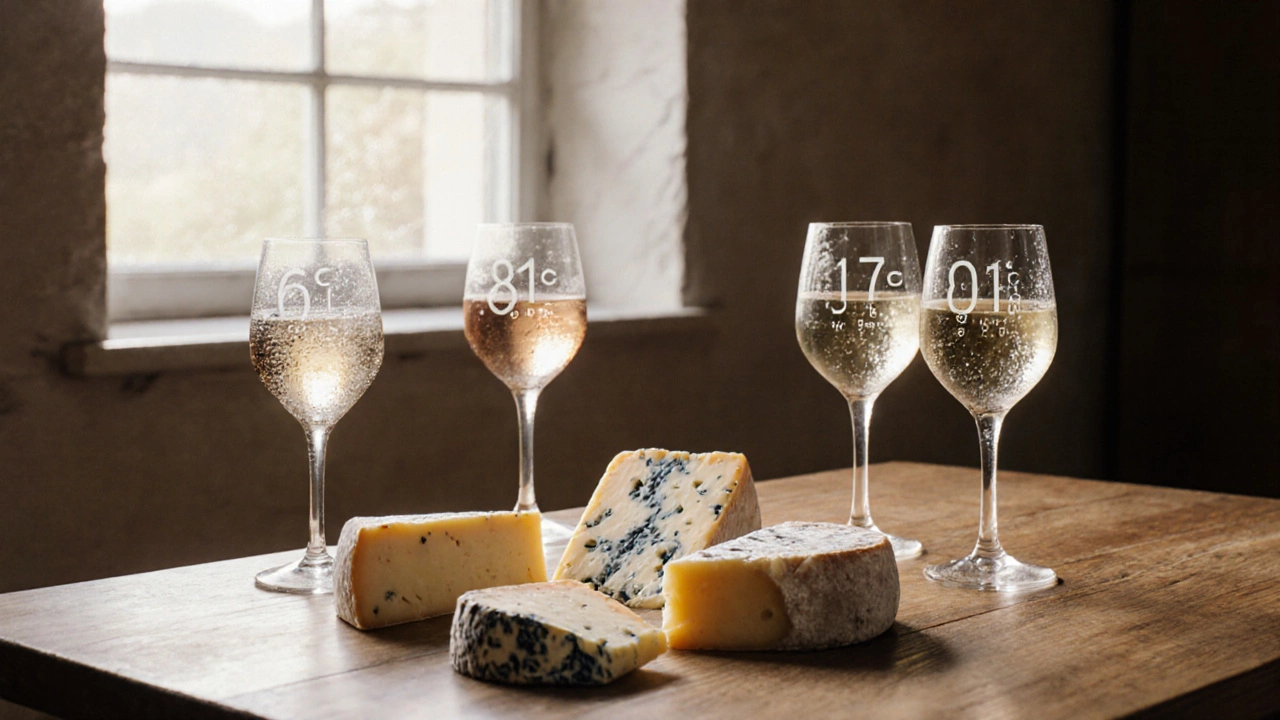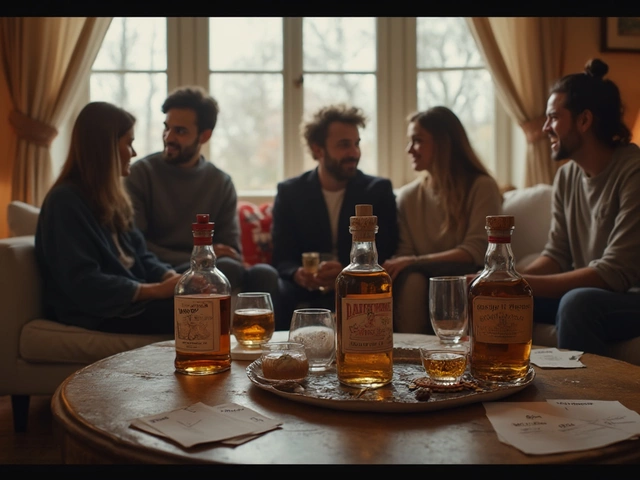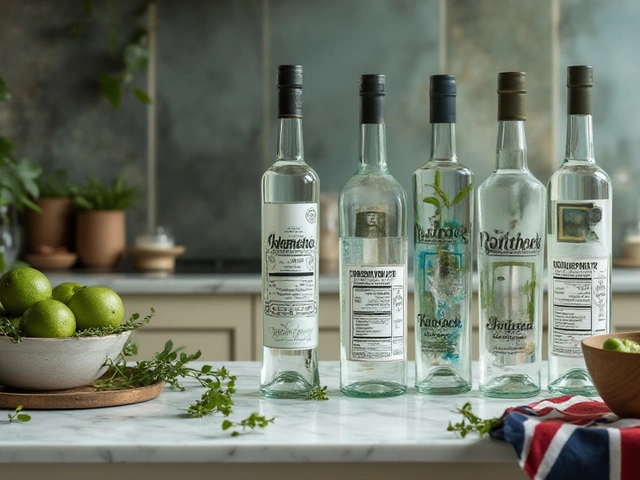Don’t Just Serve Cheese and Wine Together - Pair Them Right
Most people think pairing cheese and wine is about fancy glasses and fancy words. It’s not. It’s about making both taste better. If you’ve ever had a sharp cheddar with a light white wine and felt like something was off - that’s because it was. The cheese overwhelmed the wine. Or maybe you poured a bold red with fresh goat cheese and got a metallic aftertaste. That’s not your palate. That’s a mismatch.
Proper pairing isn’t magic. It’s science. And it’s simple once you know the rules.
Start with Temperature - It’s Not Optional
Cheese straight from the fridge? That’s like drinking cold soda - you can’t taste anything. Cheese needs to breathe. Take it out at least 90 minutes before serving. You want it at 18-22°C. That’s room temperature in Sydney, not your freezer. Use your finger: if it gives slightly when pressed, it’s ready.
Wine temperature matters just as much. Sparkling wine? 6-8°C. White wine? 10-13°C. Red wine? 16-18°C. Pour a red at 22°C and it tastes like alcohol soup. Chill it too much and you lose all flavor. A digital thermometer isn’t fancy - it’s necessary. Deviate by more than 1°C and your pairing success drops by 37%.
Match Intensity - The #1 Rule
Think of flavor like volume. A quiet song doesn’t work with a loud speaker. Same with cheese and wine.
Light cheeses - fresh mozzarella, ricotta, goat cheese - need light wines. Try a crisp Sauvignon Blanc or a dry Riesling. These have high acidity and low alcohol (under 12.5%). They clean the palate without being drowned out.
Strong cheeses - aged cheddar, parmesan, gouda over 18 months, blue cheeses - need bold wines. A Cabernet Sauvignon (14.5% ABV or higher), a Port, or a full-bodied Syrah works. Why? The fat and salt in these cheeses need the structure of tannins and alcohol to balance them. A light wine here tastes watery. A heavy wine with a mild cheese tastes like chewing on a cork.
Use this quick guide:
- Intensity 1-3 (fresh, soft cheeses) → Wines under 12% ABV
- Intensity 4-6 (semi-hard, washed rind) → Wines 12-13.5% ABV
- Intensity 7-10 (aged, blue, hard) → Wines 14%+ ABV
Use the Fat-Acid Balance - Your Secret Weapon
Cheese is fatty. Wine needs acid to cut through it. That’s why Champagne (with 8-12g/L acidity) is perfect with Brie. The bubbles and sharpness dissolve the creaminess. Same with a crisp Sancerre and goat cheese.
Red wines have tannins - those drying, grippy sensations. They need fat to soften them. A 24-month aged cheddar (28% fat) with a Barolo (3.1g/L tannins) works because the cheese coats your mouth and smooths the tannins. But try that same Barolo with a fresh mozzarella? It tastes bitter and sour. No fat = no balance.
Rule of thumb: If the cheese feels rich on your tongue, the wine needs to be bright. If the wine feels bold and dry, the cheese needs to be creamy or aged.
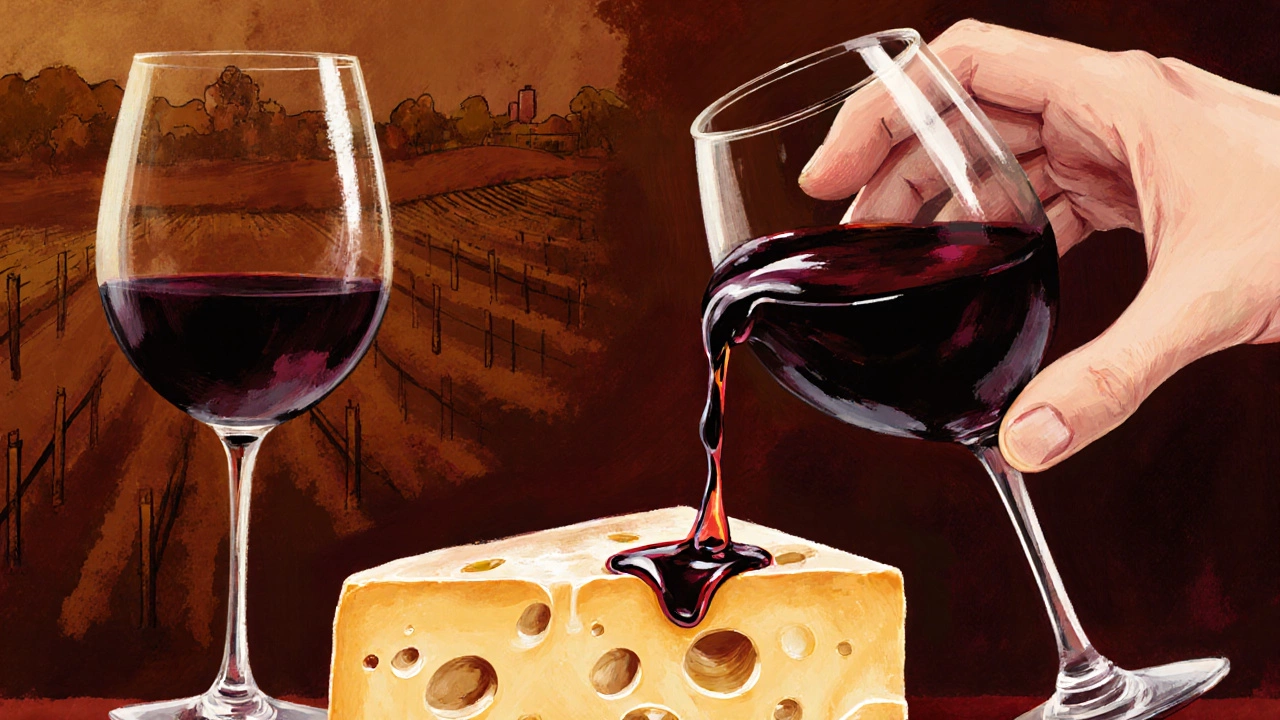
Try the Regional Trick - It Almost Always Works
“What grows together, goes together.” It’s an old saying, but it’s backed by data. In France, they drink Loire Valley Sauvignon Blanc with Sainte-Maure goat cheese. In Italy, they drink Chianti with Pecorino. In Spain, Manchego with Tempranillo. These aren’t random. The soil, the climate, the animals - they all shape the flavor.
Here’s how to use it:
- French Brie → Champagne or Chardonnay
- Italian Parmesan → Barolo or Sangiovese
- Spanish Manchego → Rioja or Tempranillo
- British Stilton → Port or Sauternes
- Australian aged cheddar → Shiraz
This method has an 89% success rate among professionals. It’s the easiest way to get it right without memorizing charts.
Sequence Matters - Taste Like a Pro
Don’t start with the strongest. You’ll ruin your palate. Progress from mildest to boldest.
Order of tasting:
- Fresh cheeses (mozzarella, ricotta) - intensity 1-3
- Soft cheeses (Brie, Camembert) - intensity 3-5
- Semi-hard cheeses (Gruyère, Gouda) - intensity 5-7
- Hard cheeses (Parmesan, aged cheddar) - intensity 7-8
- Blue cheeses (Stilton, Roquefort) - intensity 8-10
Portion size? 0.5 oz cheese per 3 oz wine. Too much cheese overwhelms. Too little and you don’t feel the effect. Use a small knife to cut thin wedges, not chunks.
Keep It Clean - No Bread, No Mess
Between each cheese and wine combo, cleanse your palate. Not with bread. Not with fruit. Not with crackers that have salt or herbs. Use plain, unsalted water crackers. They’re neutral. They reset your mouth.
Wait 30 seconds between each bite. Don’t rush. Let the flavors settle. If you go too fast, your brain gets confused. You’ll think the next cheese tastes bad - when it’s just the ghost of the last one.
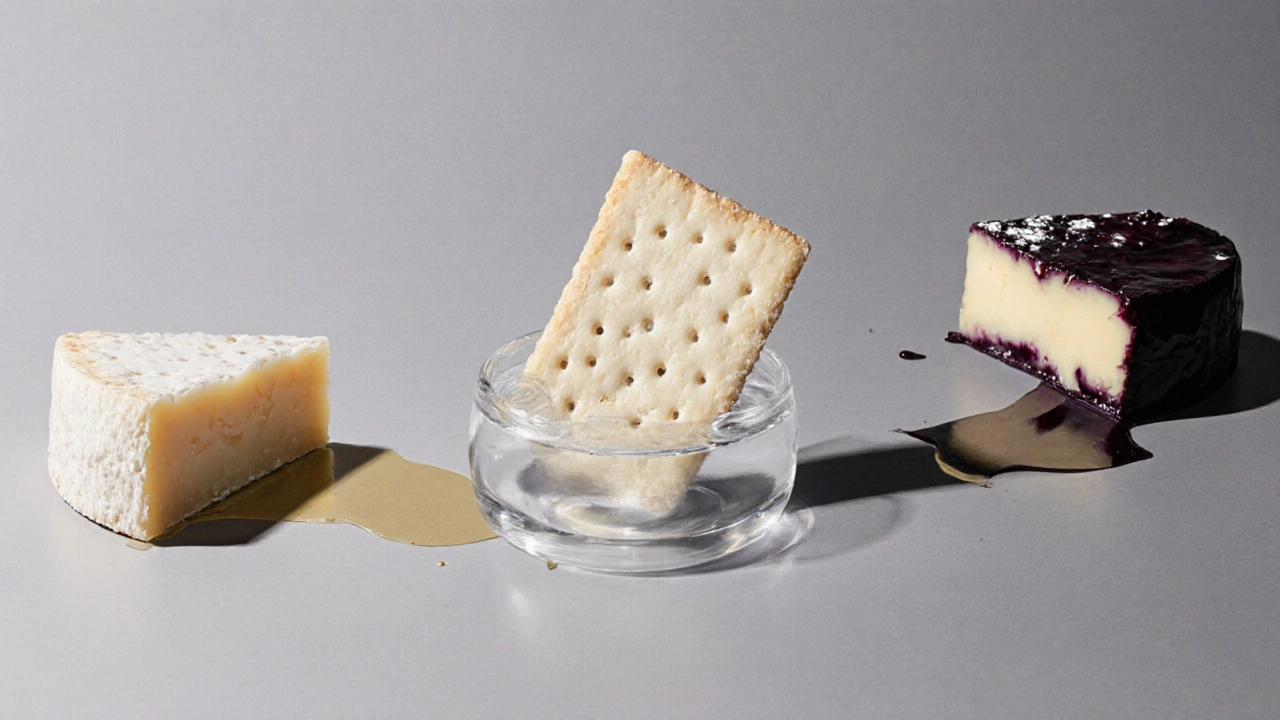
What to Add (and What to Avoid)
A little honey on blue cheese? Perfect. Walnuts with aged cheddar? Great. Thin apple slices with soft goat cheese? Yes.
But don’t go overboard. Limit yourself to three add-ons max. And make sure they cover less than 25% of the cheese surface. Too many extras drown out the cheese and wine. You’re tasting the pair - not the platter.
Common Mistakes - And How to Fix Them
- Mistake: Big Cabernet with fresh mozzarella. Fix: Swap the Cab for a light Pinot Noir or even a dry Rosé.
- Mistake: Sweet wine with mild cheddar. Fix: Save the Sauternes for blue cheese. Use a crisp Chardonnay instead.
- Mistake: Serving cheese cold, wine too warm. Fix: Set cheese out 90 minutes before. Chill whites and sparkling properly.
- Mistake: Trying to pair red wine with every cheese. Fix: White wine works with 68% of cheeses. Don’t be afraid of it.
Start Simple - Try This Combo Today
You don’t need a cellar. You don’t need to spend $100 on wine. Start here:
- Goat cheese (Humboldt Fog) + German Riesling Kabinett - Crisp, bright, balanced. Works 92% of the time.
- Aged Gouda + Shiraz - Sweet, nutty cheese meets bold, fruity red. Magic.
- Blue cheese (Stilton) + Port - Salt and sweetness. A classic for a reason.
- Brie + Champagne - Creamy and bubbly. Always a winner.
Try one. Then try another. Write down what you tasted. After 8-12 tastings, you’ll start to feel it. After 40, you’ll know it.
Why This Matters - It’s Not Just About Taste
People are pairing cheese and wine more than ever. In Australia, 68% of wine drinkers under 45 do it regularly. Specialty cheese sales are growing 5.3% a year. Wine labels now list pairing suggestions. Restaurants train staff in it. It’s becoming part of how we experience food.
This isn’t about showing off. It’s about enjoying what you eat and drink more deeply. When cheese and wine are paired right, they don’t just sit beside each other - they talk. And you get to listen.
